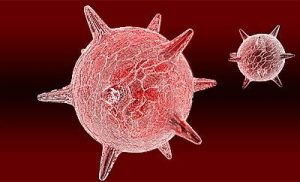The female urogenital tract consists of all the organs that are involved in reproduction, formation and release of urine. It includes the kidney, ureters, bladder, urethra, ovaries, uterus, fallopian tubes and vagina. Some of the common conditions associated with the female urogenital system are vaginal infection, infection of the pelvis, urinary tract infection (UTI), post-gynecological surgery infections, and pelvic inflammatory disease (PID).
UTI is the result of bacterial infection that multiply and spread occurs in the urinary tract. These bacterial infections if left untreated, can cause cystitis (inflammation of the bladder), pyelonephritis (kidney infection) and urethritis (inflammation of the urethra, the tube that drains urine from the bladder). UTI is common in women because the urethra is short, making it easy for bacteria to spread. This anatomical feature makes almost all women prone to UTI at least once in their lifetime. Aside from anatomy another significant cause for UTI is because of the imbalance that occurs to the normal vaignal flora.
Causes
The normal vaginal flora is dominated by one or two species of Lactobacillus and it maintains the vaginal pH around 4.4 by producing lactic acid and hydrogen peroxide in so doing Lactobacillus inhibits the growth of potentially pathogenic bacteria. 90% of uncomplicated infection is caused by translocation of E. coli bacteria which lives in the colon and around the anus to the urethra.
PID occurs when the disease causing microorganism travels from the cervix to the upper genital tract. Normally the cervix prevents bacteria entering the vagina from spreading to the internal reproductive organs. PID can lead to irreversible damage to the uterus, ovaries, fallopian tubes, or other parts of the female reproductive system and is the primary preventable cause of infertility in women.
Symptoms & Treatment
Many factors like stress, hygiene, fabrics, lotions, hormonal change and medication can cause disturbance to the normal vaginal mircoflora. If left untreated the changes in the normal flora can become intense, resulting in vaginal infection causing reduction in the number of Lactobacillus and also elevates the normal vaginal pH making it a more conducible environment for pathogenic microbes to thrive. Some common symptoms associated with UTI are burning sensation while urinating, blood in urine, feeling bladders is full even after urinating, wanting to urinate more and white discharge also called as leucorrhea. Although vaginal discharge is important for maintaining good genital health changes in the discharge requires medical attention in order to prevent infections. Normal vaginal discharge is clear and odorless whereas leucorrhea is often thick and accompanied by a foul odor. A vaginal swab test is done to determine the UTI causing bacteria, the results will provide the healthcare professional to treat one with a suitable antibiotic for killing the infection causing microbe.
Some cases of PID have not been associated with any symptoms, when PID develops common symptoms include painful periods, unusual vaginal discharge, pain urinating, pain in the lower abdomen and pain during intercourse. PID can be diagnosed by pelvic examination, blood test, tests of vaginal discharge and laparoscopic examination. After diagnosing the healthcare professional will be able to determine whether the cause is due to microbial infection and will prescribe corresponding medications. In some cases, surgery might be required to repair or remove reproductive organs.



